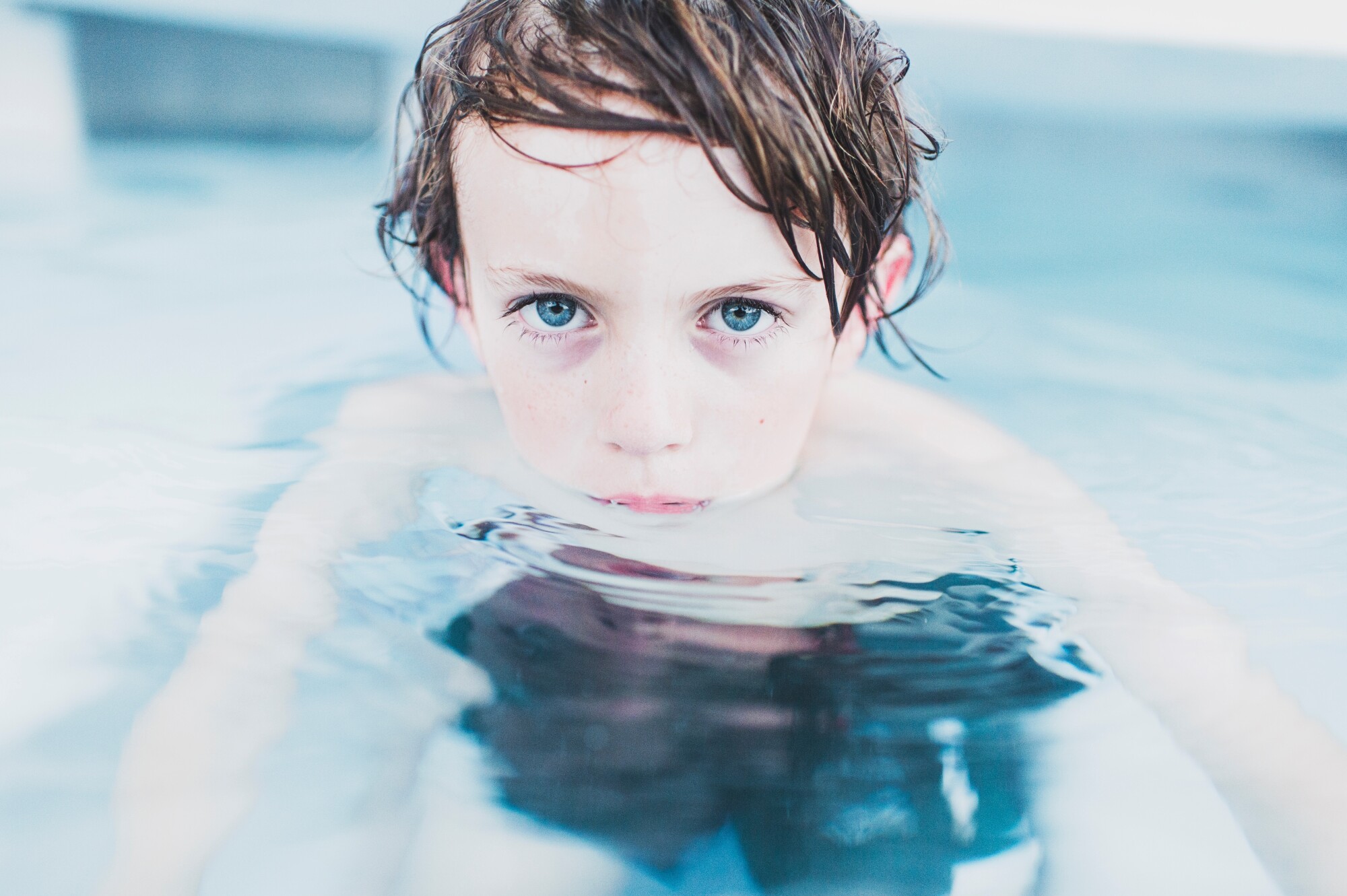About 71% of the Earth’s surface is covered in water, yet many people (including children) have a fear of water–more than 60% of Americans are afraid of deep water, and 45% are afraid of water over their heads.
Unfortunately, a fear of water carries more risk than just an inability to compete in the Olympics. According to the Red Cross, 61% of children, including teenagers, cannot perform the five basic swim safety skills, even though 94% of parents expect their kids to engage in some sort of water-related activity over the summer. And whether it’s a backyard pool party or a trip to the lake, a child needs to know how to swim.
But if your child’s trips to the water carry familiar signals–namely blood-curdling screams or attaching to you like a mussel on a barge–their lack of swim skills may be due to a fear of the water. This can also make it challenging for parents to know where to start. Here’s everything you need to know to help your child face their fear and learn essential swim skills in the process.
What Causes Fear of Water?
Babies don’t always have a fear of water. In fact, many will happily splash away in the tub or a kiddie pool. But as children get older, many develop a fear of water. So the question is, what changes?
First, understand that a fear of water is perfectly normal, even for a kid who wasn’t afraid of water when they were little. Toddler and preschool years are prime ages for kids to develop a fear of water, though some kids develop their fear when they’re older. In a younger child, there are a few possible reasons for developing a fear of water:
- Realizing the vastness of a body of water
- Realization that water could be dangerous
- Have not yet learned how to rationalize fears
- Lack of life experience to understand that a large body of water isn’t dangerous
In older children, a fear of water may be the result of an uncomfortable or scary experience, ranging from water in their nose to slipping in the pool to seeing a scary movie with a monster in the water. If uncomfortable or frightening experiences happen repeatedly, they can develop into a fear of water.
Strategies to Help Kids Who Are Scared of Swimming Pools
The good news is that as a parent, you have the tools to help your child rationalize and overcome their fear. It will take time, patience, and plenty of empathy, but even kids who are deeply afraid of water can learn to enjoy swimming.
Talk It Out
Your first step is simple: talk it out.
In order to help your child rationalize their fear, you have to understand what they’re afraid of and where it’s coming from. Keep in mind that “fear of water” is a vague term, and kids are not all afraid of water in the same way. Some kids are fine in the water but afraid of having water in their face. Some kids are afraid of being underwater. Some kids don’t mind water but are afraid of ocean waves. Some kids are okay with water but afraid of swimming. Some kids won’t set foot in water at all.
Sometimes, it’s just a general fear of water, but many kids can point to a specific thing they’re afraid of, like the size of the water or, yes, a scary movie. Once your child articulates what they’re afraid of, you can work together to come up with strategies.
Start Small
Once you have strategies, you can slowly begin teaching children how to swim.
For kids who are extremely afraid of water, the best approach is to begin with one-on-one lessons with their parents. This gives them the chance to experience water in a safe environment, able to articulate when they’re afraid without any embarrassment. That way, once they try swim classes with other children, they already have some tools in place.
In a pool, stick to the shallow end first. Even just sitting in water and getting comfortable is great for kids. That said, starting small could be as simple as sitting in water or playing with water balloons–whatever works for you!
That said, some kids are better at listening to an adult other than their parents. For those kids, one-on-one lessons with an experienced children’s swim instructor will do the trick. Make sure to tell the instructor about their fear of water so that the instructor can adapt.
Use Equipment
Another good way to help your child feel safe in the water is to give them swim equipment. This is especially important as a safety feature for kids who don’t know how to swim.
Some kids will feel more comfortable going in with equipment, as it will make them feel more secure. For kids who are afraid of water in their eyes, swim goggles are a great option. But for kids who don’t know how to swim, it’s also essential to include safety gear like a life jacket. Either way, make the equipment fun by letting them choose items with their favorite color or their favorite character.
However, you should emphasize to your child that these are not toys. They’re safety tools and should be treated as such, which means no horsing around.
Looking for Great Children’s Swimming Lessons?
A fear of water shouldn’t hold your child back from enjoying swimming. After all, there are so many wonderful experiences they could have on the water. They just need the right tools to find the fun in swimming.
If your child is learning how to swim for the first time, we offer Red Cross swimming lessons for everyone from toddlers to adults, the perfect activity for the whole family to learn how to love the pool. Check out our schedule to find your next lesson–and help your child learn how much fun swimming can truly be.



